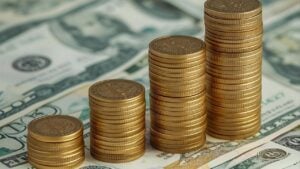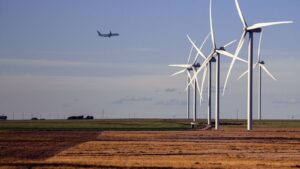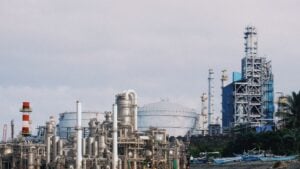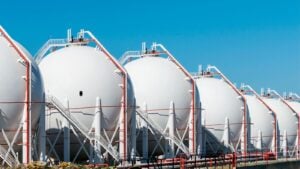Dividend investing remains a cornerstone strategy for individuals seeking reliable cash flow. Not every payout is created equal, however. To earn a place on a watchlist heading into 2025, a company must show an established record of paying and ideally growing its dividend, robust earnings or cash‐flow support and a manageable debt profile.
The following names span industries from health care to utilities to big tech. They are not recommendations to buy today but examples of how to build a watchlist with income in mind.
Health care stalwarts continue to pay
Johnson & Johnson (JNJ)
Johnson & Johnson (JNJ) has been a model of dividend consistency for more than six decades. The maker of medical devices, pharmaceuticals and consumer health products offers an annual dividend of US$5.20 per share and a yield of about 2.73%. The payout ratio — dividends relative to earnings — sits near 54%, suggesting room for increases.
J&J’s next ex‑dividend date was August 26 2025. Investors who reinvest dividends have been rewarded: the company has raised its payout for 63 consecutive years. A defensive business mix and a strong balance sheet give the company resilience through economic cycles.
AbbVie (ABBV)
Another pharmaceutical name, AbbVie (ABBV), blends patent‐protected drugs with a mature pipeline of immunology and neuroscience therapies. AbbVie pays an annual dividend of US$6.56 per share, yielding roughly 2.85%.
Despite a hefty payout ratio around 312% when calculated solely from earnings, free cash flow comfortably covers the dividend.
The company’s next ex‑dividend date in 2025 is October 15, and it boasts a dividend growth streak that stretches back over five decades.
Investors should watch how AbbVie manages the loss of exclusivity for flagship drug Humira; new therapies such as Rinvoq and Skyrizi are expected to fill the gap.
3M (MMM)
3M (MMM), known for its adhesive tapes and safety equipment, illustrates why historical dividend growth does not always guarantee a rosy future. The conglomerate trimmed its payout in 2023, breaking a record of six decades of increases.
The annual dividend is now US$2.92 per share with a yield near 1.96%. A payout ratio of about 40.5% is manageable, but the company faces headwinds from legal liabilities related to PFAS chemicals and military earplugs.
Consumer staples deliver predictable cash
Procter & Gamble (PG)
Household and personal‐care giant Procter & Gamble (PG) underpins many investors’ income portfolios.
It offers an annual dividend of US$4.23 per share and a yield around 2.83%. The payout ratio stands at roughly 65%, and P&G has boosted its dividend for 70 straight years.
The most recent quarterly dividend of US$1.0568 per share was paid on August 15 2025, following a July 18 ex‑dividend date.
Although the company lacks spectacular growth, its portfolio of brands — including Tide, Pampers and Gillette — provides steady cash generation. Investors often see such blue chips as ballast when markets turn volatile.
Coca‑Cola (KO) and PepsiCo (PEP)
Coca‑Cola (KO) and PepsiCo (PEP) illustrate the resilience of beverages and snacks in recessionary periods. Coca‑Cola pays an annual dividend of US$2.04 per share with a yield near 3.04%. The payout ratio is about 71%, and the company’s dividend growth streak spans 63 years. Its most recent ex‑dividend date was September 15 2025.
PepsiCo offers a higher yield at approximately 3.79% on an annual dividend of US$5.69 per share.
The company’s payout ratio exceeds 100%, indicating earnings alone would not cover the dividend, yet PepsiCo still manages increases through strong cash flow from beverages and snacks.
Its 53‑year streak of raises underscores the reliability of consumer staples.
Dining and telecom names provide competitive yields
McDonald’s (MCD)
Fast‑food leader McDonald’s (MCD) caters to more than 100 countries and pays an annual dividend of US$7.08 per share, which translates to a yield of about 2.38%. The payout ratio is approximately 60.7%.
The company has raised its dividend for half a century and reported an ex‑dividend date of September 2 2025. McDonald’s is rolling out new drive‐thru technology and focusing on international expansion, which could support future growth.
Verizon Communications (VZ)
Telecommunications giants present some of the highest yields in the market, though often accompanied by heavy debt. Verizon Communications (VZ) offers an annual dividend of US$2.71 per share and a yield close to 6.8%.
The payout ratio hovers around 63%, and Verizon has raised its dividend for 20 consecutive years. The next ex‑dividend date falls on October 10 2025.
AT&T (T)
AT&T (T) pays US$1.11 per share annually, yielding roughly 4.29%, with a payout ratio around 63%. AT&T’s dividend growth is limited after a cut in 2021 and remains a key risk for investors.
Next-gen satellite 5G developments illustrate telecom investment demands.
Energy majors fuel payouts
Exxon Mobil (XOM)
Oil‑and‑gas companies often deliver generous cash distributions when commodity prices are supportive. Exxon Mobil (XOM) pays an annual dividend of US$3.96 per share, which translates to a yield of about 3.58%.
The payout ratio is roughly 56%, and the company has increased its dividend for 44 consecutive years.
The most recent ex‑dividend date was August 15 2025. Strong free cash flow from disciplined spending and high oil prices supports the payment.
Chevron (CVX)
Fellow energy giant Chevron (CVX) distributes an annual dividend of US$6.84 per share, yielding about 4.59%. The payout ratio is roughly 87%, and Chevron’s dividend growth streak spans 38 years.
Its latest ex‑dividend date was August 19 2025. Investors should monitor how each company handles volatility in energy prices and the growing emphasis on renewable investments.
Recent global crude exports trends can influence cash flows for energy majors. A 20-year supply pact in LNG underscores how long-term contracts stabilize distributions.
Enbridge (ENB)
Energy infrastructure company Enbridge (ENB) offers one of the highest yields in the sector at roughly 5.61% on an annual dividend of C$2.67 per share. However, the payout ratio is high — about 128% based on earnings.
Enbridge has increased its dividend for 27 consecutive years but only modestly in recent years. The most recent ex‑dividend date was August 15 2025.
Given its heavy debt load and capital spending needs, investors should evaluate whether cash flow from long‐term pipeline contracts will continue to support the dividend.
Real estate and utilities diversify income
Realty Income (O)
Real estate investment trusts (REITs) can provide monthly or quarterly income but are sensitive to interest rates.
Realty Income (O), known as “The Monthly Dividend Company,” pays US$3.23 per share annually, yielding around 5.54%.
True to its nickname, Realty Income distributes its dividend every month. The payout ratio is high at roughly 312% based on earnings, though REITs typically use funds from operations rather than earnings to assess coverage. Realty Income has a 21‑year track record of dividend growth.
September distributions for Canadian yield-shares ETFs offer a comparison point for monthly payers. A recent update on ETF cash payouts covers distribution timing for income investors.
BCE Inc. (BCE)
BCE Inc. (BCE), a major Canadian telecommunications and media company, offers an annual dividend of C$1.26 per share with a yield near 5.28%.
The payout ratio is extremely high at about 365%, reflecting depressed earnings in recent quarters. BCE has increased its dividend in nine of the past ten years. With large capital expenditures for fibre and 5G networks, investors should watch whether cash flow keeps pace with payouts.
IBM
Another utility‑like name, IBM (International Business Machines), offers a 2.42% yield on an annual dividend of US$6.72 per share.
The payout ratio exceeds 100% based on earnings, though free cash flow covers the dividend. IBM has raised its payout for 29 straight years.
The company is shifting its business mix toward cloud computing and artificial intelligence, so earnings growth could improve over time.
Banks balance income and regulation
Royal Bank of Canada (RY)
Financials often provide solid dividends, particularly in Canada. Royal Bank of Canada (RY) — the country’s largest lender by market capitalization — pays an annual dividend of C$4.26 per share, yielding about 2.96%.
The payout ratio is roughly 45%, leaving room for increases. The most recent ex‑dividend date was July 24 2025.
Although Canadian banks have paused dividend hikes during periods of regulatory review, Royal Bank has raised its dividend in nine consecutive years.
Toronto‑Dominion Bank (TD)
Toronto‑Dominion Bank (TD) offers a higher yield of about 3.81% on an annual dividend of C$2.99 per share, the payout ratio is roughly 35%.
TD has increased its dividend for nine straight years and announced a recent ex‑dividend date of October 10 2025.
The bank has a large U.S. retail presence, which adds growth but also exposes it to U.S. regulatory scrutiny.
TD pays a $5.5-million penalty, a reminder of regulatory risks that can affect capital returns.
The Bank of Canada’s 2% inflation goal shapes rate paths that influence bank dividends.
Payments Canada membership expansion affects the competitive backdrop for financial services.
Aerospace, technology and other blue chips
Lockheed Martin (LMT)
Lockheed Martin (LMT), the world’s largest defence contractor, pays an annual dividend of US$13.20 per share.
The yield stands near 2.61%, and the payout ratio is about 74%. Lockheed has increased its dividend for 22 consecutive years, with the next ex‑dividend date set for December 1 2025.
Government defence spending provides long‑term revenue visibility, but investors should consider budget cycles and competitive pressures.
F-35 procurement debates highlight how defence budgets support contractors’ long-cycle revenues.
Microsoft (MSFT)
Big‑tech names offer smaller yields but significant dividend growth potential. Microsoft (MSFT) pays an annual dividend of US$3.32 per share, yielding roughly 0.65%. The payout ratio is around 24.9%.
Microsoft has increased its dividend for 19 straight years and set its next ex‑dividend date for November 20 2025.
Brookfield Renewable rides hyperscaler PPAs with Microsoft and Google and the data center power boom
With massive free cash flow from cloud and software operations, Microsoft has ample capacity for future increases.
The Nasdaq’s record highs frame the backdrop for growth-oriented dividend names. Ongoing AI momentum has influenced valuation multiples in big tech.
Apple (AAPL)
Apple (AAPL), meanwhile, offers an annual dividend of US$1.04 per share with a yield near 0.42%.
The payout ratio is a modest 15.5%, and Apple has raised its dividend every year since reinstating it in 2012. The most recent ex‑dividend date was August 11 2025.
As Apple’s hardware sales mature, services revenue and share repurchases could continue supporting dividend growth.
AT&T and Verizon
AT&T and Verizon remain notable for their high yields but also for heavy debt and capital spending. While these companies have kept dividends steady and even modestly increased them, investors should weigh the risk that telecom operators may prioritize network upgrades over dividend hikes.
In the past decade, cuts have been rare in the sector, yet AT&T’s 2021 reduction underscores that even long‐standing payouts are not guaranteed.
Building a resilient income portfolio
Dividends are only as secure as the cash flows supporting them. When reviewing stocks for a watchlist, investors should consider the sustainability of payouts by examining payout ratios relative to both earnings and free cash flow.
Companies with a low payout ratio, long track record of increases and defensive business model — such as Johnson & Johnson, Procter & Gamble or Microsoft — often present lower risk.
Screening for Dividend Aristocrats — companies with 25+ years of dividend increases — can anchor an income-focused watchlist alongside the names above.
High‑yield names like Verizon, Enbridge or BCE can boost income but may carry more leverage and thus more vulnerability to earnings downturns.
Geographic diversification can smooth out risk. Canadian banks like Royal Bank of Canada and TD Bank provide exposure to a different regulatory environment than U.S. lenders and have historically managed credit cycles prudently.
Energy majors Exxon Mobil and Chevron benefit from global demand for fuel but are sensitive to commodity prices; pairing them with consumer staples such as Coca‑Cola and PepsiCo can balance cyclical swings.
Real estate and infrastructure names like Realty Income and Enbridge add another layer of diversification, though they respond sharply to interest rate movements.
Ultimately, a dividend portfolio should align with an investor’s risk tolerance and income needs. Holding a mix of high‑growth, low‑yield stocks and slower‑growing, higher‑yield names can help maintain purchasing power.
Regularly reviewing fundamentals — including debt levels, return on equity and cash flow coverage — will help determine whether dividends are likely to grow or at least remain stable.
By focusing on companies with durable businesses and proven dividend policies, investors can build a watchlist that stands the test of time.


















